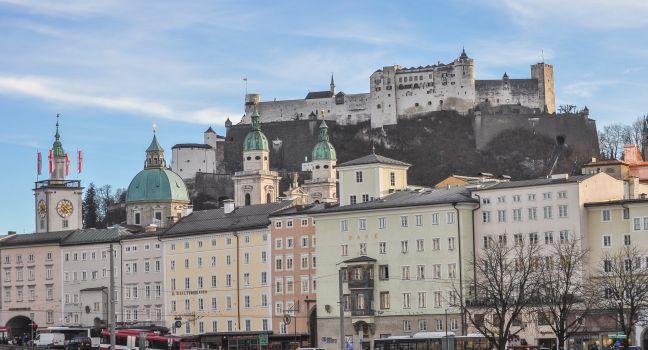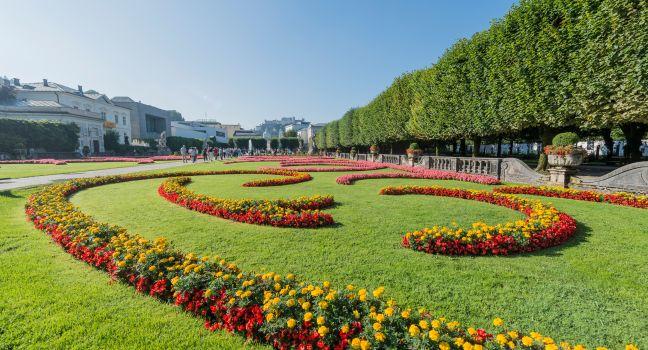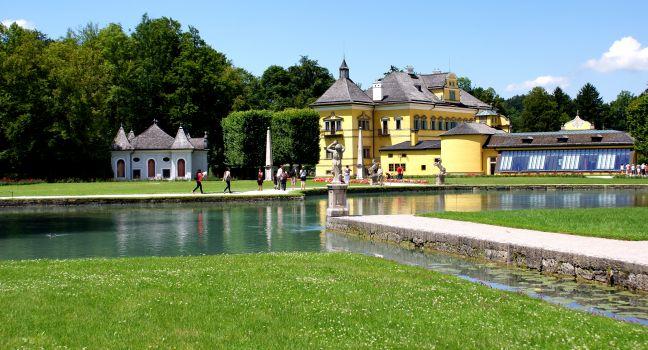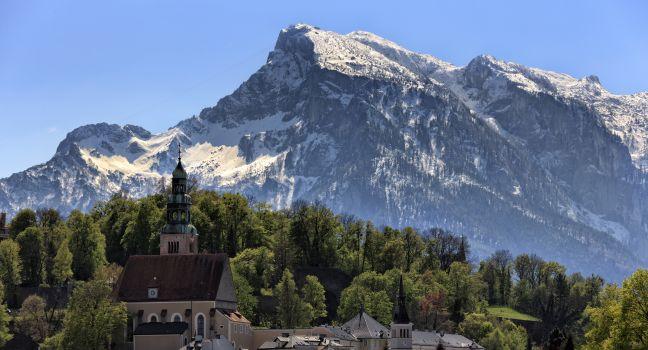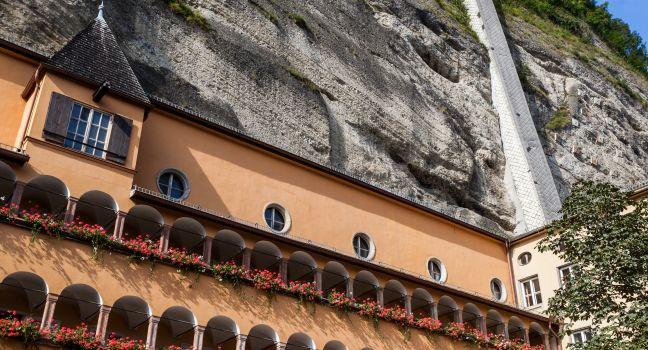Dom zu Salzburg
Set within the beautiful Domplatz with the Virgin's Column in its center, this gorgeous cathedral is considered to be the first early-Italian Baroque building north of the Alps. Its facade is of marble, its towers reach 250 feet into the air, and it holds 10,000 people. There has been a cathedral on this spot since the 8th century, but the present structure dates from the 17th century. The cathedral honors the patron saint of Salzburg, St. Rupert, who founded Nonnberg Abbey around 700, and also the Irish St. Virgil, the founder of the first cathedral, consecrated in 774, whose relics lie buried beneath the altar. Archbishop Wolf-Dietrich took advantage of the old Romanesque-Gothic cathedral's destruction by fire in 1598 to demolish the remains and make plans for a huge new structure facing onto the Residenzplatz to reaffirm Salzburg's commitment to the Catholic cause. His successor, Markus Sittikus, and the new court architect, Santino Solari, started the present cathedral in 1614; it was consecrated with great ceremony in 1628 during the Thirty Years' War. The church's simple sepia-and-white interior, a peaceful counterpoint to the usual Baroque splendor, dates from a later renovation. To see remains of the old cathedral, go down the steps from the left-side aisle into the crypt where the archbishops from 1600 on are buried. Mozart's parents, Leopold and Anna-Maria, were married here in 1747 and Mozart was christened, the day after he was born, at the 14th-century font. He later served as organist here from 1779 to 1781 and wrote some of his compositions such as the Coronation Mass specifically for the cathedral. It was a good fit, as this is the only house of worship in the world with five independent fixed organs. Today, they are sometimes played together during special church-music concerts.
On Sunday and all Catholic holidays, mass is held at 10 am—the most glorious time to experience the cathedral's full splendor.
